
Pupils at St Peter-in-Thanet Junior School have had direct contact with the International Space Station, via amateur radio.
Students took turns asking astronaut Jasmin Moghbeli questions using the amateur radio call sign KI5WSL.
The Radio Society of Great Britain staff and volunteers, including RSGB Board Chair, Stewart Bryant, G3YSX, were also there supporting the Amateur Radio on the International Space Station (ARISS) team.
Each year, about 100 contacts are made, with 20 of them in Europe. Communicating with an astronaut on the ISS can have a huge, long lasting impact on a child’s interest in Space and science.
St Peter’s student Audrey, who is also in Hilderstone Radio’s STEAMettes club (Science, Technology, Engineering, Art and Maths) was chosen to ask one of the 21 questions to astronaut Jasmin Moghbeli.
Audrey said: “When (the) day came, I was very excited – there was a really big antenna at the school! I had practiced my question and also knew that I had to say ‘over’ at the end.”

From 8.30am, pupils from other schools started to arrive and the event was streamed to all classrooms. When everyone was settled in the school hall, headteacher Mr Whitehouse, gave a warm welcome to all the children, parents and teachers.
The RSGB was represented by the marketing manager Anna Clarke M7EPA and Director Stewart Bryant G3YSX.
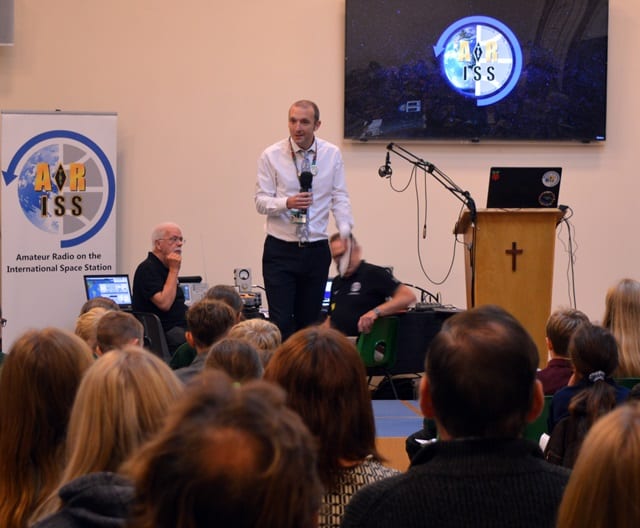
The school’s science coordinator Nathan Williams said: “At the heart of this achievement lies the significance of amateur radio. Amateur radio represents the very essence of human ingenuity and the unyielding desire to connect, explore, and communicate.
“It has been the bridge that has connected our school to the cosmos, enabling our students to engage in conversations that transcend the boundaries of our planet. Through amateur radio, our students have delved into the intricate world of frequencies and signals, learning not only about the wonders of space but also the importance of effective communication.”

There was a slide show of all the children’s activities leading up to the day and trainee astronaut Meganne Christian attended and gave a summary of her career in the space industry and her selection from 22,000 applicants to become an astronaut reserve with the European Space Agency.
She spoke about her experience working in Antarctica, where the sky was so clear she could see her shadow cast by the Milky Way. The wind chill temperature was -104 C and she was lucky enough to ride on NASA’s zero gravity flights, testing different materials prior to sending them into space.
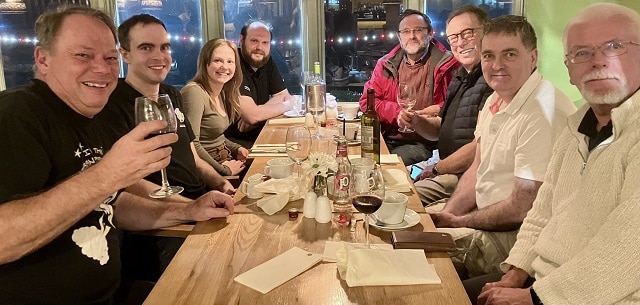
Ciaran Morgan M0XTD, the RSGB representative for ARISS International and the UK ARISS team lead, demonstrated the white noise of the signal from the radio before hearing Jasmin. Then he asked the audience of children and parents to practice a cheer.
Hilderstone Radio Society member and pupil Isabella Payne – who last year with dad Matt made contact with astronaut Kjell Lindgren as he passed overhead in the ISS – made the call for the International Space Station and after three attempts Jasmin replied.
The children began their questions, with queries about from living on the ISS to life elsewhere in the Universe. To the question ‘what is the most amazing thing you have seen on Earth from the Space Station?’ Jasmine replied ‘every time I look at Earth there is something beautiful looking back at me. I get excited when I see a coastline as most of time we see ocean and I know there will be people down there.’
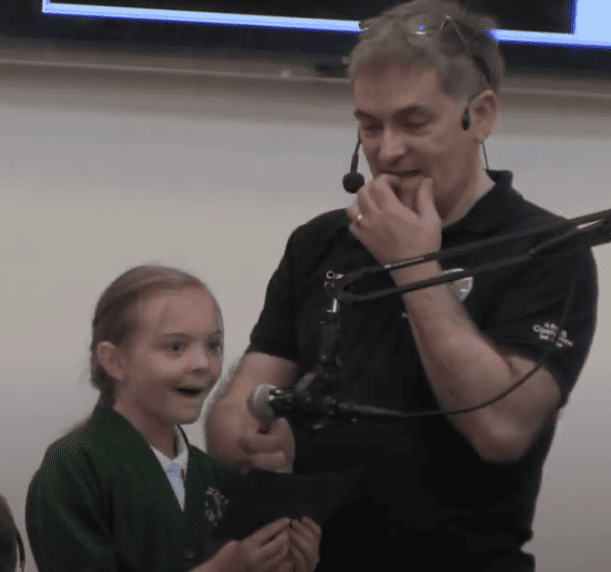
For the question ‘is it really true that girls are better suited to Space than boys?’ she replied ‘yes, definitely! We each have different things we bring to the table, strengths and weaknesses, and so both boys and girls can be well suited to Space’. At the end of the contact, the children waved their flags and cheered.

Children from St Mildreds’, Callis Grange, Sandown, Palm Bay, Ramsgate Holy Trinity, The Downs and Charles Dickens schools joined St Peter’s for the space adventure, which was also watched live and on internet streaming by parents.
Head Teacher Tim Whitehouse said: “We love Science at St Peter’s and space exploration is an integral part of our learning. Our children are passionate about Space Club, learning about radio communications and astronomy-based activities like star gazing.
“We applied to ARISS to make contact with the space station and our questions to the flight team had to be approved by NASA. To be selected is a rare honour and it formed the central part of school-wide education programme about space and science.
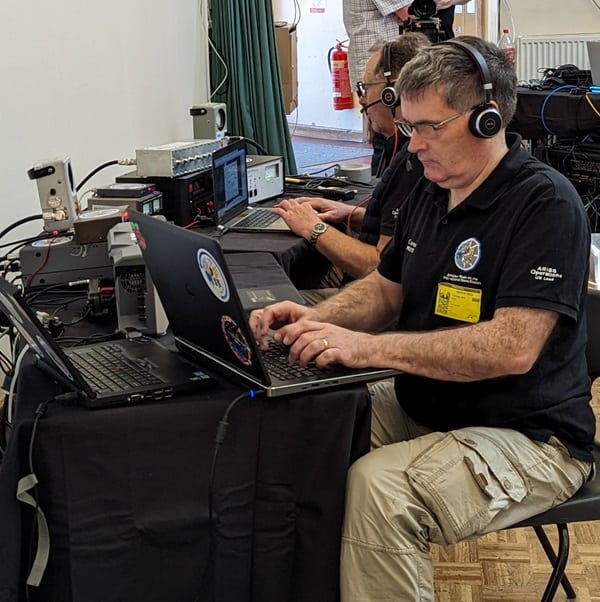
“We’ve very grateful to Matt Payne and John Hislop from Hilderstone Radio for all their support in making the day happen. Ciaran Morgan from ARISS who was our liaison contact (he also facilitated the contact) was fantastic in guiding us through the process and helping us prepare the children for this event.
“Big praise also goes to our Science lead Nathan Williams who organised the event and spent many hours in planning and preparation.
“I wholeheartedly thank every person and organisation that has worked so enthusiastically to make this dream come true.
“It is an inspirational out of this world experience for our children that they will remember for the rest of their lives.”
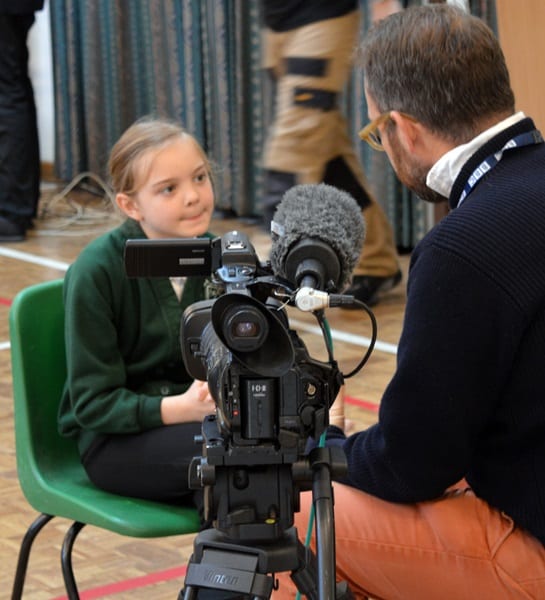
The Hilderstone Radio Society had been instrumental in securing Wellesley House school’s contact with Tim Peake in 2017 and were again behind the event at St Peter’s school.
In August 2022, 9 year old Isabella had the short QSO with Kjell Lindgren as he passed overhead in the ISS. Later, he said that their conversation was the highlight of his trip. The contact made news all around the world and helped the radio society choose Isabella’s school for the latest contact event.

The theme for British Science week in March 2023 was Connections. The Hilderstone Radio Society organised various activities to do with radio communications. Year 3 classes sent Morse code to each other using LEDs. Year 4 classes received a personal message from the FUNcube-1 satellite, while the whole of year 6 used Python to code a message on the Raspberry Pi Sense Hat for the astronauts on the International Space Station.
For Space Week, the Ramsgate Stargazers organised astronomy based activities, including investigating the craters on the Moon, solar astronomy and making a pocket sized Solar System.
You can see the contact here: https://youtu.be/lnPlIHGV-YE
Article with many thanks to John Hislop of Hilderstone Radio Society and Ramsgate Stargazers

